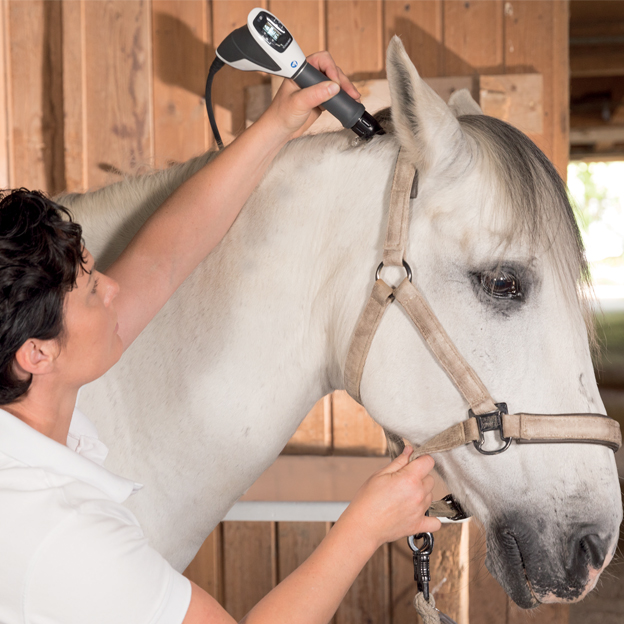Every little thing You Required to Know About Equine Therapy for Mental Health
Every little thing You Required to Know About Equine Therapy for Mental Health
Blog Article
Assessing the Efficiency of Laser Therapy in Horse Treatment for Injury Rehabilitation
The evaluation of laser therapy's effectiveness in equine injury rehab depends upon numerous aspects, consisting of recuperation time, discomfort mitigation, and tissue regeneration. Clinical researches recommend significant improvements in conditions like tendonitis and osteo arthritis, credited to improved mobile feature and raised ATP production. Veterinarians often observe premium outcomes with laser therapy compared to standard techniques, placing it as an essential element in equine treatment. The requirement for continuous monitoring and tailored treatment plans can not be overemphasized. What specific clinical evidence sustains these insurance claims, and just how do veterinarians execute these procedures in technique?
Understanding Laser Therapy
Laser therapy has become a pivotal device in vet medicine, particularly in the therapy of equine problems. Understood for its non-invasive nature and effectiveness, laser treatment includes the application of certain wavelengths of light to boost tissue repair work and minimize inflammation. This restorative technique is progressively favored for its ability to increase the recovery process in horses dealing with a selection of bone and joint injuries and persistent problems.
The primary device behind laser therapy is its capability to enhance mobile functions. When laser light passes through the skin, it is taken in by mitochondria, the giant of cells, which causes enhanced production of adenosine triphosphate (ATP) This biochemical power boost facilitates mobile repair work and regrowth. Furthermore, laser treatment advertises vasodilation, improving blood circulation and oxygen shipment to damaged cells, therefore quickening healing.
In equine medicine, laser treatment is specifically useful for problems such as tendonitis, osteo arthritis, and injury recovery. The method is admired for its pain-relieving buildings, enabling steeds to regain wheelchair and feature much more quickly. Vets likewise value its marginal adverse effects compared to other treatment modalities, making it a reputable and secure option for equine treatment.

Exactly How Laser Therapy Works

Upon absorption, these photons set off a series of biochemical changes, boosting mitochondrial function and resulting in increased adenosine triphosphate (ATP) manufacturing. This rise in ATP speeds up mobile metabolic process, promoting cells repair and regeneration. In addition, laser therapy modulates inflammatory actions by influencing cytokine degrees and decreasing oxidative tension, consequently reducing discomfort and swelling.
An additional significant facet of laser treatment is its duty in improving microcirculation. The treatment promotes vasodilation, improving blood flow and oxygen distribution to broken cells (Equine Therapy). This helps with the removal of cellular particles and sustains the expansion of fibroblasts and collagen synthesis, vital for injury healing
Medical Proof
The efficacy of laser therapy in equine therapy has actually been validated with numerous clinical research studies, showcasing its healing potential across a variety of conditions. A number of controlled trials and observational researches have documented considerable improvements in tissue repair, discomfort reduction, and total rehabilitation timelines. A study carried out by Turner et al. (2012) showed that steeds treated with low-level laser therapy (LLLT) for tendon injuries displayed increased recovery compared to those obtaining conventional treatments. The research highlighted a significant decrease in inflammation and enhanced collagen formation.
Similarly, study by Johnson and colleagues (2015) concentrated on equine muscle injuries, exposing that laser therapy substantially accelerated muscle mass fiber regeneration and reduced muscular tissue rigidity. Medical assessments have actually revealed that laser treatment can ease chronic conditions such as osteo arthritis.
Veterinarian Insights

Veterinarians likewise appreciate the flexibility of laser therapy. It can be employed for a vast array of problems, from superficial injuries to much deeper musculoskeletal injuries. Dr. Emily Brown highlights its utility in dealing with problems like tendonitis and osteo arthritis, where traditional treatments frequently fail. She explains that laser therapy can be tailored to the details requirements of each steed, guaranteeing optimum outcomes.
In addition, vets value the capability to integrate laser treatment with various other treatment methods. visite site This multimodal strategy can improve overall therapy effectiveness, offering a comprehensive remedy for equine recovery. Such endorsements from seasoned specialists highlight the expanding acceptance and application of laser therapy in equine medication.
Practical Considerations
A key element of executing laser treatment in equine treatment entails recognizing the useful considerations that guarantee its efficacy and security. It is vital to select the ideal laser device, as numerous types vary in wavelength, power, and penetration deepness. Vets should be fluent in these specifications to customize treatment methods efficiently per injury type
In addition, the frequency and duration of laser treatment sessions need mindful planning to make the most of healing benefits while lessening any prospective damaging effects. Constant surveillance of the equine's feedback to treatment can lead required changes in the therapy program. Establishing a safe and regulated setting during treatments is likewise important to stop unintended exposure to laser discharges, which can harm both the equine and the handler.
Educating and accreditation of employees carrying out laser therapy are vital to make certain correct technique and to promote safety requirements. Furthermore, preserving exact records of each session, including laser settings and observed end results, is vital for assessing the general effectiveness of the go to this website treatment and for making data-driven decisions.
Verdict
Laser therapy has emerged as an effective method in equine injury rehabilitation, offering significant advantages in recuperation time, discomfort alleviation, and tissue healing. Medical studies underscore substantial renovations in problems such as tendonitis and osteo arthritis, associated to improved cellular function and increased ATP production. Vet monitorings support these searchings for, highlighting remarkable outcomes compared to typical treatments. For ideal results, continual surveillance and customized treatment protocols continue to be necessary in leveraging the full potential of laser treatment in equine care.
Report this page